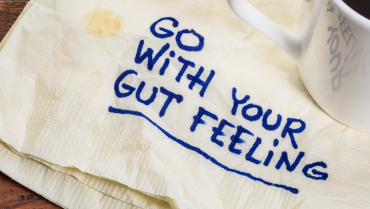The Elimination Diet is a protocol designed to clear the body of foods and chemicals to which you may be allergic or sensitive. This diet sets the stage to allow your body to rest and detox optimally, recover, and begin to function efficiently again.
You may be feeling symptoms that your body may be overburdened or compromised including:
Brain and Head
- Behavioral disorders
- Psychiatric disorders
- Dizziness or lightheadedness
- Headaches
- Mood swings
Mouth, Nose, Throat, and Chest
- Asthma
- Persistent cough
- Rapid heartbeat
- Respiratory problems
- Runny nose or nasal congestion
- Lump in the throat
Abdominal Regions
- Diarrhea
- Nausea
- Vomitting
- Constipation
- Infertility
- Irregular periods
- Stomach pains
- Swelling
Limbs, Hands, and Feet
- Weakness
- Numbness
- Weak pulse
- Swelling
- Exhaustion
- Joint stiffness
- Muscle aches
Skin
- Hives
- Rash
- Itching
- Eczema
- Pale/blue coloring
The dietary changes help the body clear toxins that may have accumulated over time due to environmental exposure, foods, beverages, drugs, alcohol, or cigarette smoke. It also encourages the reduction of inflammation throughout the body.
An “Elimination Diet” is so-called because you remove certain foods or food categories from your diet. The main culprits include dairy, egg, soy, sugar, and gluten. You can personalize this plan by getting food sensitivity testing done beforehand.
These foods are avoided for a certain amount of time, depending on the severity of that sensitivity. Then, you slowly and carefully add these foods back into the diet, one at a time, to see which foods continue to be ‘trigger foods.’ Reading labels is essential during this process to ensure you are not consuming these foods in even the smallest doses. You should not restrict caloric intake, and you should consume a variety of different foods otherwise.
If you find no improvement within three weeks on this protocol, either you do not have any food allergies/sensitivities, or there could be another factor complicating the picture. The Elimination Diet is part of a process, the journey of listening to yourself and your body and giving it what it needs.
Most people experience many improvements when they eliminate food triggers, including increased energy, mental clarity, decreased joint and body pain, elimination of headaches, etc. If you discover a food sensitivity, you can then talk over a gut healing protocol with your clinician. Some people can experience symptoms, especially in the first week, like changes in sleep patterns, lightheadedness, headaches, joint or muscle stiffness, and gastrointestinal function changes. Such symptoms rarely last for more than a few days and may show a need for detoxication support or withdrawal from caffeine or sugars.
Here are some tips:
- Clear out the kitchen cabinets and refrigerator and go food shopping so you have everything you will need.
- Eat and cook simply. Make a pot of chicken-vegetable-rice soup: Cook extra chicken and roasted veggies. Have prepared foods available.
- Eat regular meals – three meals a day, including healthy proteins, fats, and veggies to keep blood sugar stable.
- Avoid any foods that you know or believe you may be sensitive to, even if they are on the “allowed” list.
- Utilize organics, all-natural, grass-fed, free-range, wild-caught, etc., whenever possible. Utilize fresh foods whenever possible.
- If you are consuming coffee or other caffeine-containing beverages regularly, it is wise to reduce your caffeine intake slowly rather than abruptly stop it; this will prevent caffeine-withdrawal headaches.
- Read oil labels and use only those that are obtained by a “cold-pressed” method.
- Remember to drink the recommended amount of plain, filtered water each day.
- You may use leftovers for the next days’ meal or part of a meal unless you’ve discussed histamines with your clinician.
It is vital to keep a journal once you are ready to reintroduce specific foods or food groups.
Ingest the food one to two times in one day, then avoid that food, and all other elimination foods on your list, for four days. Pay attention to your body’s response in those few days and refer to the trigger food symptoms list. If there is no response to that food, you may keep this food in your meal plan and move on to the next food for reintroduction. If you are unsure if you reacted to that food, try it again, and wait another four days before moving on.
Food sensitivities can be challenging to discover because they are chronic, not acute. You may not see or feel reactions immediately. The Elimination Diet takes time and mindfulness but can be very rewarding and empowering. If you would like guidance, we here at BeWell Associates can help you. If you would like to have a more personalized look into how your body reacts to foods, we offer nutritional testing of over 90 foods.
The symptoms you experience day in and day out can be from the food you are ingesting. Gaining the knowledge and power to support and heal your body can be found through incorporating The Elimination Diet Plan, and we’re happy to help you along the way.
Stay Safe and Be Well!





Add Comment